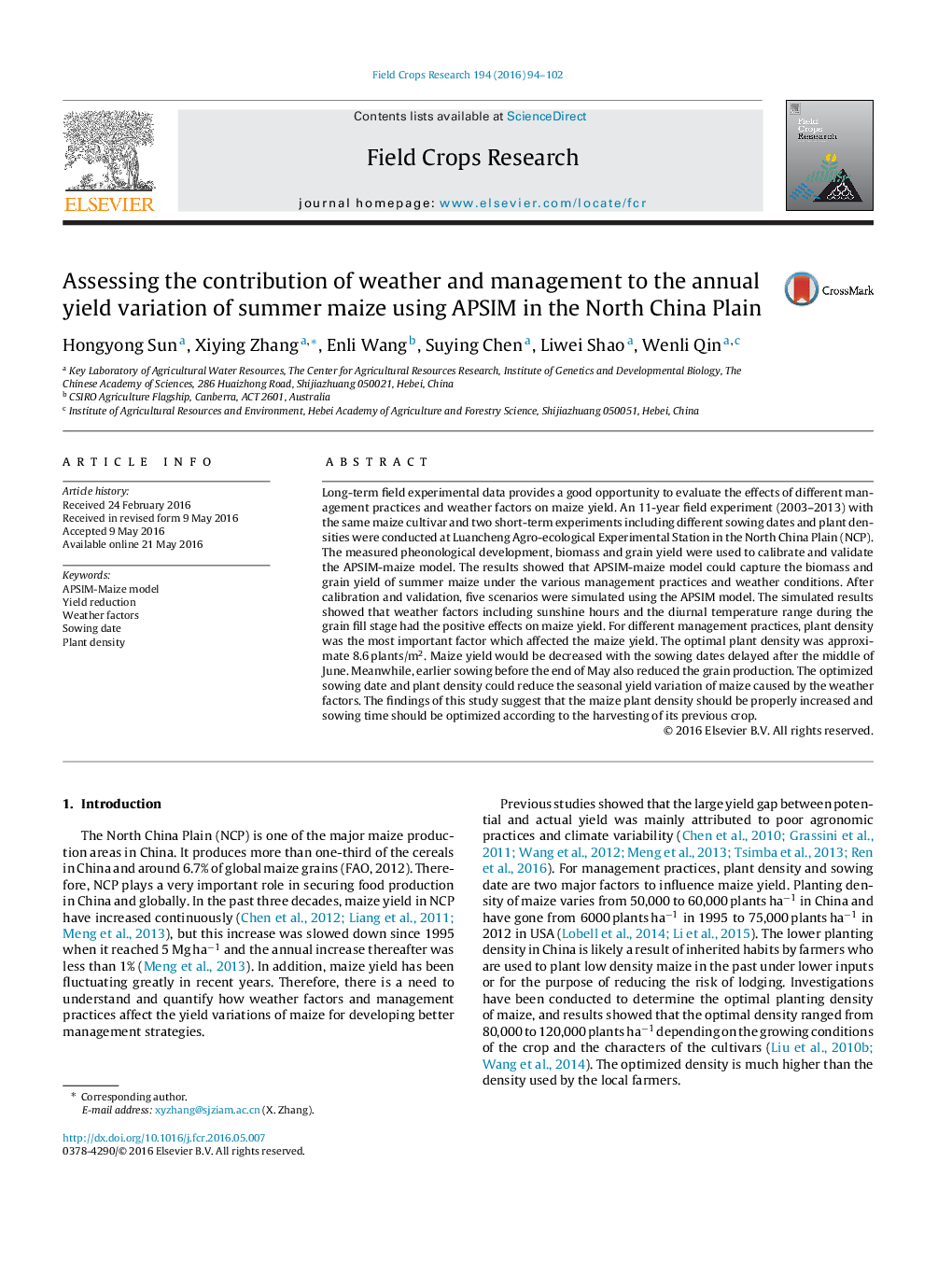| کد مقاله | کد نشریه | سال انتشار | مقاله انگلیسی | نسخه تمام متن |
|---|---|---|---|---|
| 4509834 | 1624669 | 2016 | 9 صفحه PDF | دانلود رایگان |

• APSIM-maize model could capture the effects of weather factors and management practices on maize yield.
• Radiation and the diurnal temperature range during the grain fill stage had the positive effects on maize yield.
• The optimal plant density was approximate 8.6 plants/m2.
• Maize yield would be decreased with the sowing dates delayed after the middle of June.
Long-term field experimental data provides a good opportunity to evaluate the effects of different management practices and weather factors on maize yield. An 11-year field experiment (2003–2013) with the same maize cultivar and two short-term experiments including different sowing dates and plant densities were conducted at Luancheng Agro-ecological Experimental Station in the North China Plain (NCP). The measured pheonological development, biomass and grain yield were used to calibrate and validate the APSIM-maize model. The results showed that APSIM-maize model could capture the biomass and grain yield of summer maize under the various management practices and weather conditions. After calibration and validation, five scenarios were simulated using the APSIM model. The simulated results showed that weather factors including sunshine hours and the diurnal temperature range during the grain fill stage had the positive effects on maize yield. For different management practices, plant density was the most important factor which affected the maize yield. The optimal plant density was approximate 8.6 plants/m2. Maize yield would be decreased with the sowing dates delayed after the middle of June. Meanwhile, earlier sowing before the end of May also reduced the grain production. The optimized sowing date and plant density could reduce the seasonal yield variation of maize caused by the weather factors. The findings of this study suggest that the maize plant density should be properly increased and sowing time should be optimized according to the harvesting of its previous crop.
Journal: Field Crops Research - Volume 194, 1 August 2016, Pages 94–102